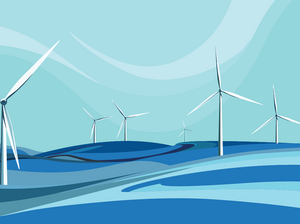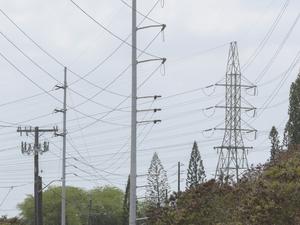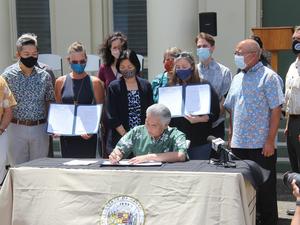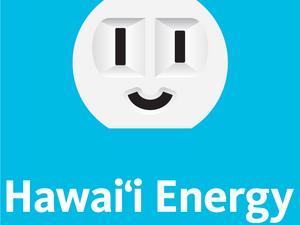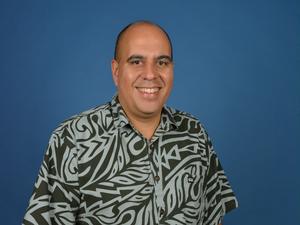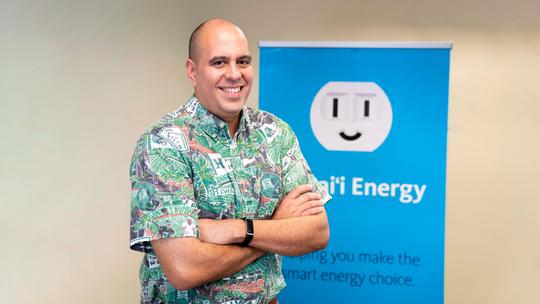
Plenty of work lies ahead for Hawaii to achieve its carbon-neutral energy usage goal by the year 2045. That includes at the county level, where targets laid out in the City and County of Honolulu's Climate Action Plan are much closer, in 2025.
“The City is soon to start the next phase of construction of an ambitious public-private partnership to upgrade City facilities island-wide, including fire stations, police stations and later parks facilities, to make them more energy efficient, save taxpayer dollars, and boost clean energy jobs to assist with recovery from the Covid-19 economic impacts,” county officials said in a statement.
The Department of Environmental Services is also poised to receive one of Hawaii Energy's "largest rebates ever," according to the city, for improvements made this year to the Sand Island Wastewater Treatment Plant.
Pacific Business News caught up with Brian Kealoha, executive director at Hawaii Energy, about some of those partnerships. The group has been doing its own promotions this month, like an “Ugly Fridge” giveaway, which encourages residents to submit a photo of an old fridge in need of replacement by Tuesday, Oct. 26, for a chance to win a new, more efficient refrigerator.
What are your thoughts on how the C&C of Honolulu and other counties and entities have picked up on Energy Efficiency Month and some of Hawaii Energy’s initiatives?
The counties have been great partners in driving energy efficiency. The City and County of Honolulu has two performance contracts in motion right now that have the potential to greatly reduce energy consumption in city-owned facilities. This builds upon the work they completed last year to retrofit all of the street lighting to LED lights and the completion of the first phase of work at Sand Island Wastewater Treatment Plant.
The County of Maui signed on to our Strategic Energy Management program to identify and drive down their energy usage in their facilities. The County of Hawaii has aggressively pursued water leak detection which also provides energy savings through reduced pumping load, and we just completed some virtual energy data analysis with them.
What do you see as the next big area where we as a society (and especially the business community) can save money and power?
The next big area is integrating smart systems to manage energy usage. For commercial buildings, intelligent building controls and energy management systems allow for optimizing energy use without any sacrifice to building comfort. Many hotels have installed smart guest room thermostats last year through our bonus incentive which allowed them to reduce air conditioning use in the hotel rooms that were not occupied, which was a lot during the early days of the pandemic. These smart building controls, which differ depending on the building type, not only can reduce energy use, but also the peak demand charges on the electric bill.
Some customers could even use these controls for demand-response programs when available, where customers would be paid to reduce loads at certain times when called on through this automated control system. Additionally, air conditioning, refrigeration, and pumping are also areas with a lot of remaining potential.
Can you tell me about Hawaii Energy’s rebate with the Department of Environmental Services for improvements to the Sand Island Wastewater Treatment Plant?
This is an exciting project which replaced older, less-efficient technology with the installation and power for new ultraviolet disinfection equipment on one of the channels at the wastewater treatment plant. The upgrade will drive a 15% reduction in energy use for the single-channel UV disinfection. That may not sound like a lot, but since the equipment operates nearly 24/7, it will save the City and ultimately taxpayers $750,000 annually and about $15 million over the life of the equipment. The City is planning additional upgrades at other channels at the plant to drive greater savings.
The C&C of Honolulu teased efficiency upgrades in a recent release. Can you elaborate on that?
The C&C of Honolulu is about ready to launch its next phase of energy efficiency projects across over 80 facilities that is expected to save the City and taxpayers over $1.4 million. Based on early estimates, Hawaii Energy will help incentivize the project by providing an estimated $400,000 in rebates. Projects include lighting, air conditioning, energy efficient transformers, and EV chargers to name a few.
How would you assess or grade the local business community’s adoption of power-saving initiatives and rebates going on two years of the pandemic?
Hawaii is currently on track to meet the Energy Efficiency Portfolio Standard established in 2008 to reduce energy consumption by 4,300 gigawatt hours by 2030, which is great. However, a lot of this was accomplished through businesses harvesting the low-hanging fruit – typically lighting retrofits. For Hawaii to remain on track, we will have to drive deeper savings in our commercial buildings where there still are opportunities abound.
These investments typically have a very strong ROI, however available cash to make these investments are challenging for many businesses, especially in the current economic environment. Businesses should really consider financing these upgrades as they often can provide immediate cash flow, especially with Hawaii Energy rebates available.
